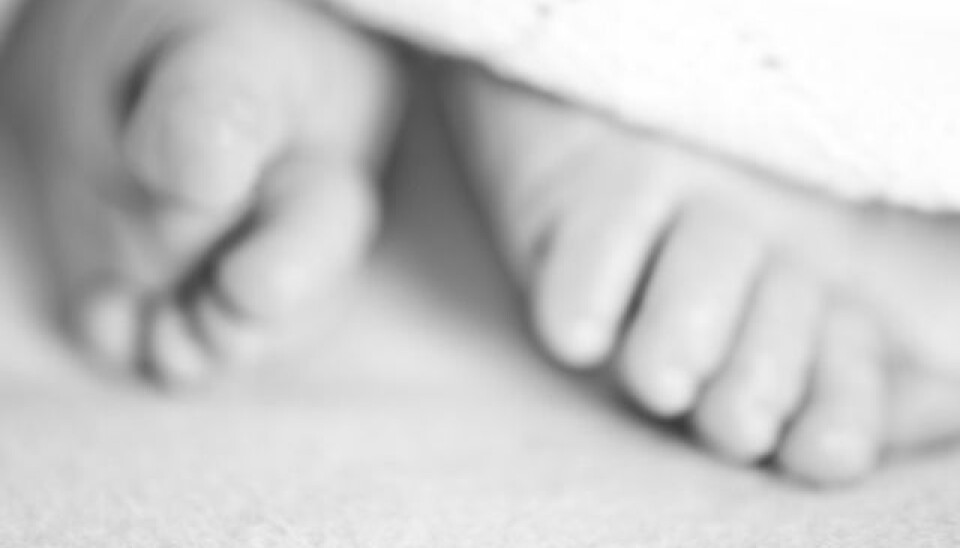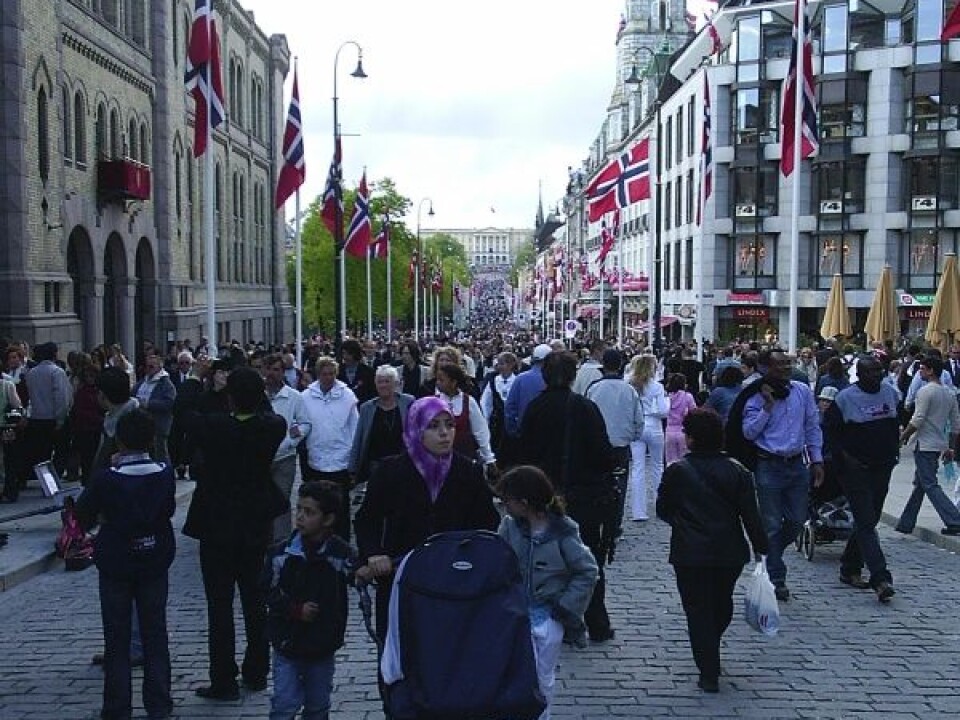
Infants from immigrant group at risk
Stillbirths and infant deaths occur twice as often among the offspring of ethnic Pakistani couples in Norway than in ethnic Norwegians.
Denne artikkelen er over ti år gammel og kan inneholde utdatert informasjon.
The numbers of stillbirths and babies who die before the age of one in Norway are among the lowest in the world. But the frequency of these deaths varies according to ethnic backgrounds.
Researchers from Oslo University Hospital and the University of Bergen, among others, have joined forces in a new study of Norwegian national statistics on stillbirths and infant deaths from 1995 to 2010.
The study shows that the risk of stillbirths and infant deaths in Norway during this fifteen-year period was twice as high in populations with a Pakistani background as among ethnic Norwegians.
Differences persist
The researchers used data from the Medical Birth Registry of Norway and information on immigration from Statistics Norway to tally cases of births and stillborn births and to match this to information about mothers and fathers.

An earlier study that looked at data from 1967 – 1993 showed that women in Norway who were born in Pakistan ran higher risks than ethnic Norwegian women of stillbirths or giving birth to infants who died in their first year.
The researchers were eager to see whether this would change with the next generation. Would the children of Pakistani immigrants, second-generation ethnic Pakistanis who were born in Norway, run lower risks compared to the third generation, or grandchildren of the first immigrants?
In fact, the new study shows that the infant mortality risk is lower for the grandchildren of Pakistani immigrants, but that there are still differences from what statistically is called the host population. The risk of stillborn infants among ethnic Pakistanis in Norway had dropped only compared to the figures stretching all the way back to 1980.
“The study shows that a higher risk continues into the next generation,” says one of the researchers behind the study, Ingvil Krarup Sørbye of the Norwegian Resource Centre for Women’s Health at Oslo University Hospital.
The combined rate of stillborn births and deaths in the first 12 months among children born in Norway of Pakistani immigrant parents was 6.9 per thousand in the years 1995 to 2010. The corresponding rates for the next generation – children born in Norway whose parents are ethnic Pakistanis born in Norway to Pakistani immigrants - was 5.6 per thousand. The corresponding rate of infant deaths among ethnic Norwegians is 2.9 per thousand.
Nevertheless, the number of stillborn births and infant deaths has declined across all of Norway's different populations, and is now as low as it has ever been.
But why is the risk still greater within certain groups?
Possible causes
The researchers have only compared three groups in Norway in this study: Norwegian-born with a Norwegian background, Norwegian-born with a Pakistani background and Pakistani-born with a Pakistani background.
This means that they have not conducted similar studies of other ethnic groups in Norway. Similar studies conducted in other countries have shown that these risks can vary widely among population groups from different nations.
There are some possible explanations for the higher rates of stillbirths and infant deaths in the Pakistani-Norwegian community, whether Norwegian-born or not.
One of them is that ethnic Pakistanis in Norway are much more likely to have children with someone they are related to. Marriages between cousins are known to raise the risks of genetic diseases and defects.
These types of marriages are less common among the Norwegian-born offspring of Pakistani immigrants than they were in their parents’ generation, but the researchers point out that the marriages are still frequent enough to have an impact.
Other risk factors
Another factor that generally increases the odds of a stillbirth or an infant death is education levels among mothers. In the years leading up to 2010, both the first and second generations of ethnic Pakistanis in Norway tended to have less education than Norwegians with a Norwegian ethnic background.
The researchers stress that the total picture may still change when statistics dating from after 2010 are added, because more Norwegian-born persons with Pakistani ethnicity will have given birth in Norway.
Another medical explanation for the difference in risks is that women of Pakistani descent are more likely than ethnic Norwegians to have diabetes or to give birth to underweight or prematurely born infants.
Weighing in on the ethnic Pakistani mothers’ favour however, is that fewer of them have smoked tobacco during their pregnancies.
Other explanations
The researchers point out that one element of uncertainty in the study is that the numbers of stillbirths and infant deaths in Norway are very low, regardless of ethnicity.
“The low number of cases gives us a higher degree of uncertainty in comparisons between groups,” says Sørbye.
Other causes of stillbirths and deaths in the first 12 months of life could also be at play, but none are readily evident to the researchers on the basis of these statistics.
The general decrease in risks of stillbirths is probably the result of improvements in gynaecological care during pregnancy for all groups in Norway from 1995 to 2010.
“This can mean that we are preventing deaths in the womb and that the problems behind them are turning up as a higher risk of deaths after birth.”
“This applies in particular to birth defects or other serious genetic conditions. Even if infant deaths are at an historic low in Norway, they will still tend to occur more often for the groups at greater risk,” says Sørbye.
------------------------
Read the Norwegian version of this article at forskning.no
Translated by: Glenn Ostling


































